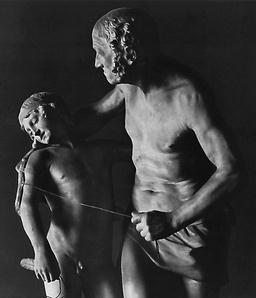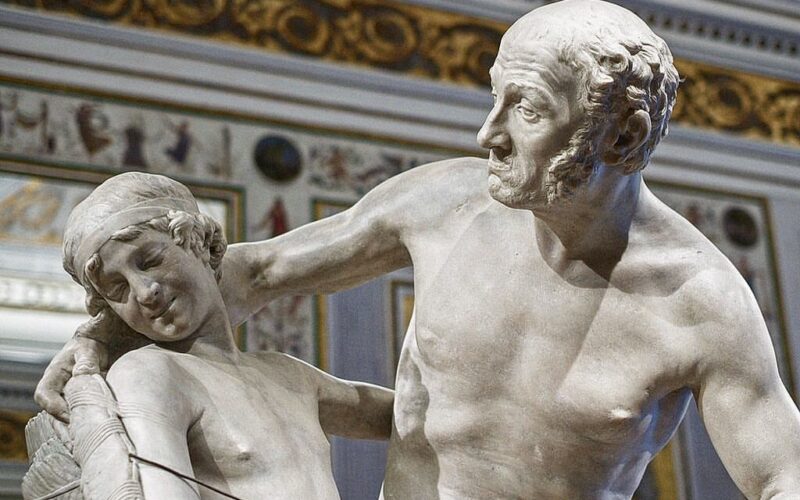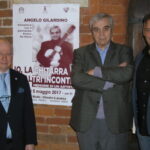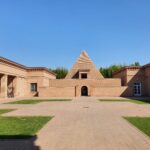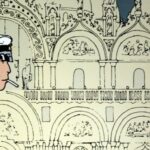In the pulsating heart of Venice, where echoes of the past interweave with the breath of art, the Correr Museum safeguards a sculpted dialogue between eras and emotions: “Daedalus and Icarus” by Antonio Canova. This piece, carved with the mastery of an artist mature beyond his years, serves as a bridge between ancient myth and eternal gratitude.
The narrative of the myth is well-known: Daedalus, the ingenious craftsman, and Icarus, his daring son, rise beyond the confines of their imprisonment with wings of wax and feathers. However, Icarus’ zeal drives him too close to the sun, and in a tragic finale, the sea embraces his fall.
Canova, however, weaves a more personal story in this sculptural group. The age gap between the two figures speaks not of father and son, but of grandfather and grandson, with Daedalus’ face being a clear homage to Canova’s own grandfather. It’s a tale of gratitude, where the grandfather, despite his limitations, sells land to ensure young Antonio a future in art, giving him wings not of wax, but of talent and opportunity.
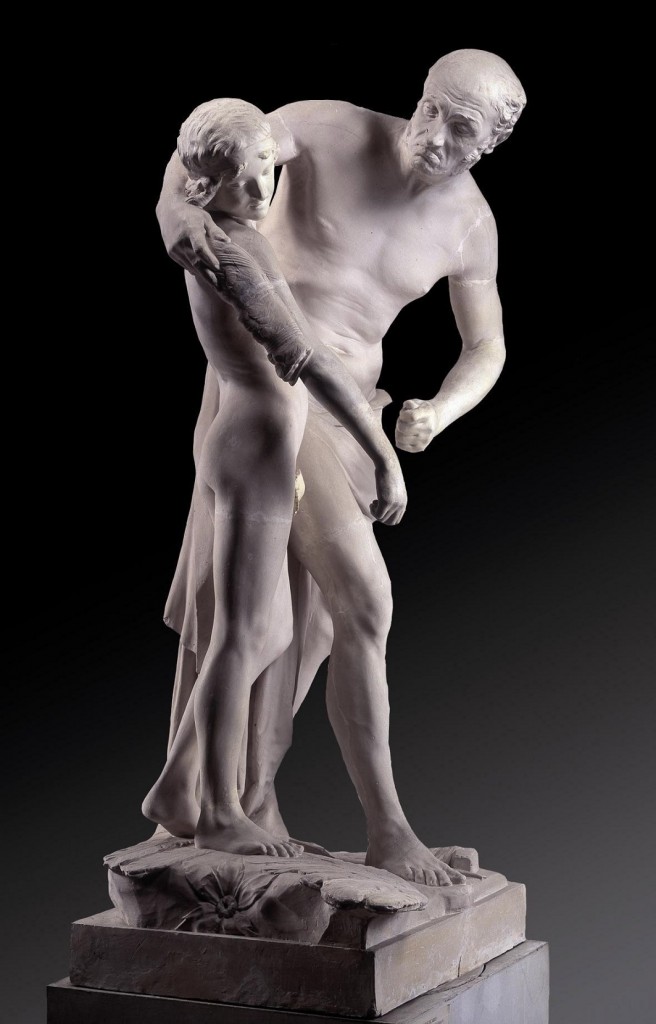
Not everyone perceives this family echo in the sculpture. Some argue that Canova’s grandfather was reluctant to lose help in his stonecutting workshop. Yet, even with a grumble of discontent, the grandfather makes the sacrifice, allowing Canova to “fly” towards his artistic destiny.
Thus, the sculpture is not just an interpretation of the myth, but a dialogue between generations, a sculptural tribute that celebrates the mentor and the pupil, the sacrifice and the success. It’s an invitation to reflect on the wings we are given and how we choose to use them.
For those wishing to immerse themselves in this story of art and affection, the Correr Museum offers not just the sight of this work but also a journey through time, where each sculpture, each brushstroke, each musical note is a soul’s flight towards the infinite.
